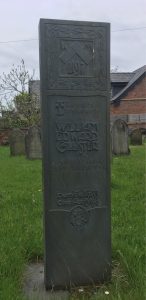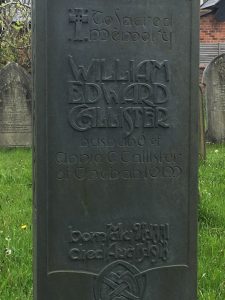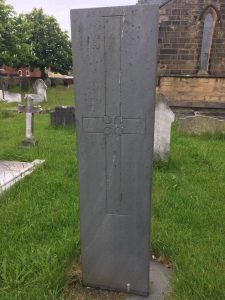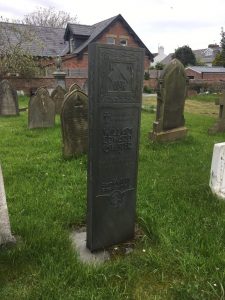 Few of the distinctive headstones designed by Manx designer Archibald Knox will be found outside of the Isle of Man, the best known being that created for Arthur Lasenby Liberty for whom the gifted Manx designer worked for several years. But a lesser known memorial, behind which lies a tragic story, resides in a quiet, Lancashire churchyard in its centenary year.
Few of the distinctive headstones designed by Manx designer Archibald Knox will be found outside of the Isle of Man, the best known being that created for Arthur Lasenby Liberty for whom the gifted Manx designer worked for several years. But a lesser known memorial, behind which lies a tragic story, resides in a quiet, Lancashire churchyard in its centenary year.
Carved in Welsh slate by Thomas Quayle, the headstone is dedicated solely to the memory of William Edward Callister who drowned at sea in 1918 and was a science master at the Douglas Secondary School in Park Road, but grew up in Onchan. The Callister family is linked to the Knox clan by marriage.
The story begins, however, at lunchtime on the 15th August, 1918, when William Callister and his five year old son Will headed out from their home towards the cliffs below Onchan Head to hunt for crabs; popping into Gell’s grocers shop on Broadway to purchase biscuits for their outing. Neither of them returned by tea-time, as expected, and his wife, Annie, assumed they had visited her father in law, also of Onchan. But as the evening wore on her concern for their welfare grew and a search was made for the thirty seven year old man and his young son.
At 11.00pm Sergeant Cowley of Onchan discovered Callister’s coat, a pair of shoes belonging to the boy and some sandwiches on what is known as the Chair Rock, situated below the Howstrake Golf Links. The child’s wooden spade was also recovered. The search was resumed the following morning, but nothing was found. It was almost one week later when the school attendance officer, A. J. Cormode, made a shocking discovery. Searching amongst the rocks he found the body of the young boy in an inlet not far from where the other items were discovered. With the help of J. Skillicorn, also of Onchan, they retrieved the boy’s lifeless body, which was taken to the Douglas Bay Hotel pending an inquest by the Coroner, J. S. Gell, when death by drowning was confirmed.
But of the boy’s father, described as a well-built man of active habits and calm bearing, there was no trace. He was said to be familiar with the coastline, skilled in crabbing and a strong swimmer.
Some weeks later his body was discovered in the River Ribble, together with a letter which all but confirmed his identity, later affirmed by the dead man’s father who travelled to Lytham mortuary to identify his son.
For reasons that remain unclear, William Callister was buried at St John’s Church, Lytham St Anne’s in Lancashire, but it was architect Jos. E. Teare, on behalf of the Freemasons, who instructed Thomas Quayle to carve the Manxman’s headstone. William Callister was the Worshipful Master of the Spencer Walpole Temperance Lodge at the time of his death, which accounts for both the Masonic insignia and lodge number represented at the top of the headstone.
The local stonemason quoted £35 for the work and carving of the headstone, delivery to its destination, erection and churchyard fees – with an additional charge of £1 for the cutting of an incised cross on the back of the stone.
Meanwhile, his young son was buried in Braddan Cemetery alongside his maternal grandmother and subsequently his grandfather, Joseph Cretney of Ballanard Farm. Joined later by his mother, Annie Cain Callister, who died in 1968, his father’s death is also recorded here.
William Callister senior (an Onchan schoolmaster) was also laid to rest under a Knox designed stone carved by the Quayle family in Douglas Borough Cemetery.
Further information about Archibald Knox available at www.archibaldknoxforum.com
(Photos courtesy of Louise Piscina)
Valerie Caine
© August 2018
(Courtesy of Manx Life)

